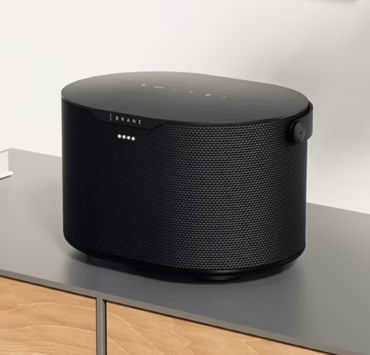Everything Nvidia Announced at GTC 2025: Groundbreaking AI, GPU, and Robotics Innovations

Nvidia, the leading AI chip manufacturer, showcased its latest innovations at the annual GPU Technology Conference (GTC) 2025. CEO Jensen Huang delivered a keynote address highlighting the company’s advancements in AI, robotics, and accelerated computing. Here’s a comprehensive list of Nvidia’s key announcements:

Blackwell Ultra GPUs
Nvidia introduced the next evolution of its Blackwell architecture, the Blackwell Ultra series. These GPUs offer increased memory capacity and improved performance for AI workloads. The Blackwell Ultra GPUs feature 288 GB of HBM3e memory per chip, a 50% increase from previous models, and deliver up to 15 petaFLOPS of dense 4-bit floating-point performance.
-
GB300 NVL72: This rack-scale solution integrates 72 Blackwell Ultra GPUs with 36 Grace CPUs, aiming to deliver exceptional computational power for large-scale AI applications.
-
HGX B300 NVL16: A high-performance server-class unit that offers up to 11 times faster inference for large language models, significantly accelerating AI processing capabilities.
Vera Rubin Architecture
Nvidia announced its upcoming GPU architecture, Vera Rubin, slated for release in 2026. This will be followed by Vera Rubin Ultra in 2027 and the Feynman architecture in 2028. This roadmap demonstrates Nvidia’s commitment to continuous innovation and its focus on maintaining its leadership position in the rapidly evolving AI industry. The Vera Rubin architecture promises to bring significant improvements in performance and efficiency, further enhancing Nvidia’s offerings for AI and high-performance computing applications.
Personal AI Supercomputers
Nvidia unveiled two new desktop supercomputers: the DGX Spark and the DGX Station. These systems are designed to bring AI capabilities to a wider range of users, from researchers to businesses, enabling them to develop and deploy AI models more efficiently.
-
DGX Spark: Equipped with a GB10 Superchip, this system is capable of performing 1,000 trillion operations per second, providing immense computational power for AI research and development.
-
DGX Station: Featuring the B300 Grace Blackwell Ultra Desktop Superchip with 784GB of coherent memory space, this workstation is tailored for data-intensive applications, facilitating seamless AI model training and inference.
Silicon Photonics Networking Switches
To address the growing need for efficient data center networking, Nvidia introduced photonics-based networking switches aimed at connecting millions of GPUs while reducing energy consumption:
-
Spectrum-X Photonics Switches: Designed to enhance data transfer speeds and energy efficiency in data centers, these switches utilize silicon photonics technology to meet the demands of large-scale AI workloads.
-
Quantum-X Photonics Switches: These switches further extend the capabilities of Spectrum-X, offering advanced features for quantum computing applications and high-performance networking.
By leveraging silicon photonics, Nvidia aims to enhance data center efficiency and scalability, supporting the growing demands of AI and cloud computing. This technology promises to significantly reduce latency and increase bandwidth, making it crucial for high-performance computing applications.

Open Llama Nemotron
Nvidia announced a family of open reasoning AI models built on Meta’s AI models, designed for enterprise applications. These models are part of Nvidia’s broader strategy to democratize access to AI technologies, enabling businesses to integrate AI into their operations more effectively. By providing open models, Nvidia is facilitating collaboration and innovation across industries, from healthcare to finance.
GR00T N1: Nvidia introduced the GR00T N1, a foundational system for humanoid robots with dual processing capabilities for rapid and deliberative thought. This system is designed to enhance the development of humanoid robots by providing advanced cognitive capabilities. The GR00T N1 represents Nvidia’s commitment to robotics and AI, aiming to accelerate the creation of more sophisticated and intelligent robots that can interact with humans more naturally.

Newton: Nvidia collaborated with Google DeepMind and Disney Research to develop Newton, an open-source physics engine for robot creation. Newton is designed to simulate complex physical interactions, allowing developers to create more realistic and responsive robots. This collaboration highlights Nvidia’s focus on fostering innovation in robotics and AI by providing tools that can be used across various industries.
AI Foundation Models for RTX AI PCs: Nvidia announced new AI models designed to enhance AI capabilities on consumer PCs equipped with RTX GPUs. These models enable users to run AI applications more efficiently on their personal computers, bringing AI closer to mainstream users. This development underscores Nvidia’s efforts to make AI more accessible and user-friendly for a broader audience.

Cosmos World Foundation Model Platform: Nvidia introduced the Cosmos World Foundation Model Platform, designed to accelerate physical AI development. This platform provides a comprehensive framework for creating and deploying AI models that interact with the physical world, such as robots and autonomous vehicles. By leveraging this platform, developers can build more sophisticated AI systems that integrate seamlessly with real-world environments.
Expanded Omniverse: Nvidia enhanced its Omniverse platform with generative physical AI capabilities. Omniverse is a powerful tool for creating virtual worlds and simulating complex environments, and these new capabilities further expand its potential for applications in fields like architecture, product design, and robotics. The expanded Omniverse allows users to generate realistic simulations and models more efficiently, enhancing collaboration and creativity across industries.

DRIVE Hyperion Platform: Nvidia achieved critical automotive safety and cybersecurity milestones for its DRIVE Hyperion platform. This platform is designed to support the development of autonomous vehicles by providing a comprehensive suite of hardware and software solutions. The advancements in safety and security are crucial for the widespread adoption of autonomous vehicles, as they address key concerns about reliability and trustworthiness.
Agentic AI Blueprints: Nvidia launched Agentic AI Blueprints in partnership with various companies to automate work across enterprises. These blueprints provide pre-built AI workflows that can be easily integrated into business operations, streamlining tasks and improving efficiency. By offering these blueprints, Nvidia is helping businesses leverage AI more effectively, enabling them to automate complex processes and focus on strategic growth initiatives.
Nvidia’s announcements at GTC 2025 set a new benchmark for AI, GPU technology, and robotics innovation. By continuously pushing the boundaries of what’s possible, Nvidia reinforces its leadership in the tech industry and paves the way for the next era of digital transformation.
















